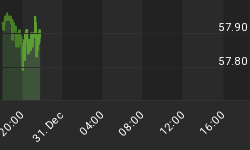You really can't overemphasize the danger each individual presents to his or her own portfolio. Even the relative few investors who sense this danger may not truly understand it. Consider the following truism:
Fear is stronger than greed, which is why financial markets fall more rapidly than they climb.
Most investors will say the sentence above is common knowledge. But, if so, why then do most investors fail to act on what they know?
The failure I have in mind is the behavior toward risk, namely: The average investor is risk-averse toward a known gain, but is risk-seeking toward a certain loss.
When a stock goes up in price, individuals will sell too soon, especially when that stock has outperformed the broader market. They avoid risk by locking in the gain. When a stock goes down, individuals won't sell soon enough, especially when that loser has underperformed the market. They assume the risk of even deeper declines, rather than choose to cut their certain losses.
Study after study bears out this truth, both in controlled experiments and in the data reflecting the actual gains and losses of real investors. Published results from firms like Dalbar Financial and Vanguard consistently show that, over the past 20 years, individual investors and mutual fund shareholders have had average returns that are half (at best) of the annual returns of the broader stock market.
This sad tale of underperformance tells itself in many ways. Dalbar's data shows that equity fund investors held their shares less than 30 months on average, with fixed-income shareholders averaging about 34 months.
One assumes that 30 to 34 months is long enough for an investor to realize that a given fund isn't "hot" any more, and that it's time to look for the next hot one, only to repeat the self-destructive cycle again. The phenomenon has appeared in markets from metals to tech stocks to commodities to overseas stock indexes, etc., ad nauseam.
What's more, these same studies and surveys also show that most investors are overconfident in the decisions they make. Put another way, they don't even know that they are their own worst enemy.
Market prices move in recognizable patterns: Those patterns can also reveal specific price levels that help confirm the direction of the trend, or identify the time to step aside. Respecting the price, pattern and trend is the first step toward discipline, instead of yielding to emotions. Learn the patterns, and you'll starve the emotional beast.
















